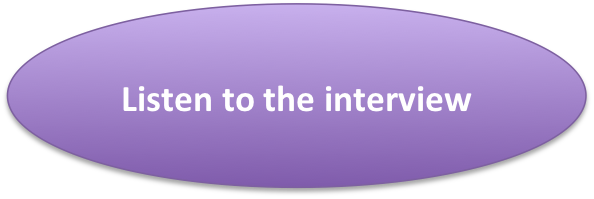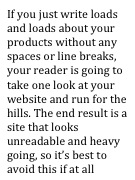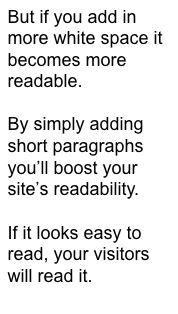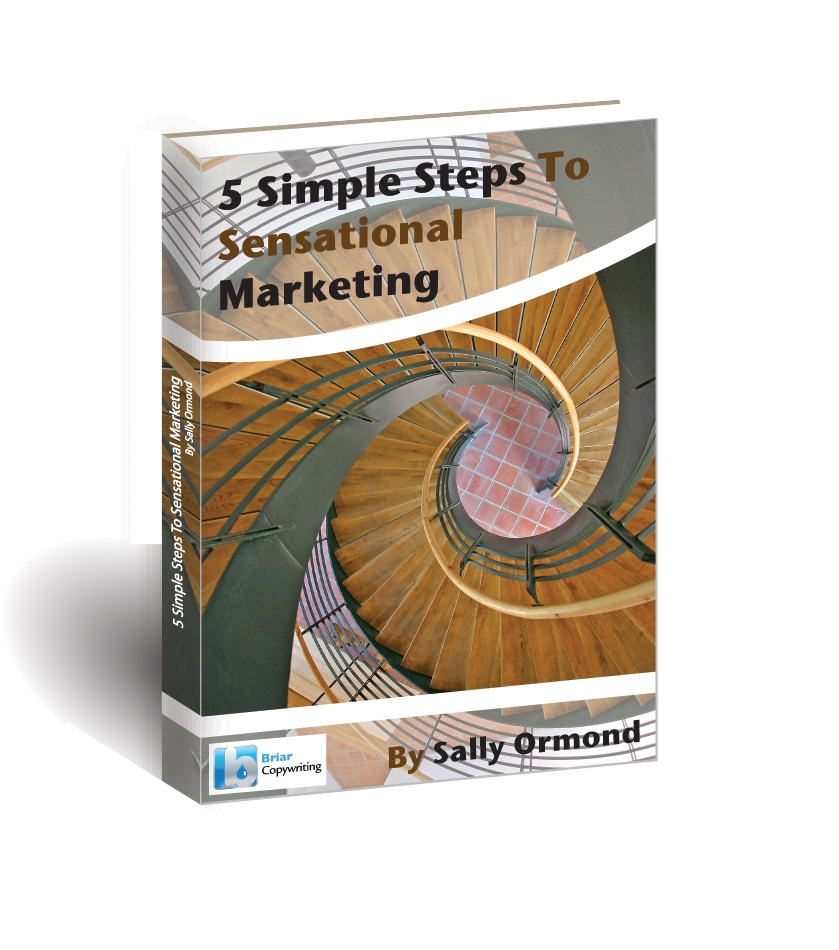Entries Tagged 'copywriting tips' ↓
October 8th, 2012 — Call to Action, copywriting tips
We all know that our marketing content has to be interesting, compelling and focused on the needs of our marketplace.
But that’s only part of it.
If your content doesn’t contain powerful and commanding calls to action, it’s essentially dead in the water.
A call to action is a critical part of your marketing. It signifies the next step you want the reader to take along the relationship-building road.
But contrary to popular belief, a call to action (CTA) isn’t simply ‘Buy Now’; the type of call to action you use will depend on what you’re trying to achieve.
The different types of calls to action
There are 3 main types of call to action:
1. Getting a sale
This is the simplest form and is the archetypal ‘Buy Now’.
Once your prospect has read your website, brochure, newsletter etc., it is designed to get them to take the next step in your business relationship: to buy from you.
Frequently, this call to action will be a button, which should standout and be obvious.
2. Building your list
If your customer isn’t in a buying position just yet, you can still use a call to action.
In this case it’s more likely to be a request for them to download an eBook, white paper or sign up for your newsletter. Capturing their email address in this way will enable you to start building a strong relationship with them.
3. Displaying your expertise
In the very early days, potential customers want to be reassured that you’re an expert in what you do so they can trust you.
That’s where the third type of CTA comes into play.
When writing blogs and articles make sure you add in hyperlinks to take your readers to other related content that they might find useful. This cross-referencing will enhance their experience and display your depth of knowledge.
The result? They’ll get the information they need and you’ll show off your expert credentials.
So as you can see, calls to action are a major part of your marketing writing and can take on various forms.
Any writing where you don’t include a form of CTA is wasted writing.
September 17th, 2012 — copywriter, copywriting tips, effective copy
A short while ago I was approached by Joseph Bushnell of Web Marketing Inner Circle, to do an interview about my work as a copywriter.
During the interview Joseph wanted to dig down to find our exactly what it is that makes writing persuasive, powerful and have the ability to sell more. But not only that, he also explored life as a copywriter and what that role involves.
Here are a few of the areas we covered areas such as:
- How to make your web copy more powerful, creative and persuasive
- The essential rule to follow when writing for your own business
- 1 word which you should avoid using in copywriting at all costs (and what word you should use instead)
- 3 tips for making your copy more readable
- How to find out what your customers truly value the most
- Whether you should you focus on one main benefit or multiple benefits?
- How to stop yourself from overwriting
- How to get testimonials that are so strong, they lead to new customers
- 6 ways to get social proof
- 5 newsworthy reasons to publish a press release
- How to create a newsletter that your readers will value (and buy from)
- Whether to use plain text or HTML in your newletters?
- Why you need “thick skin” as a copywriter
- When it might be appropriate to walk away from a copywriting project
You can listen to the interview by clicking on the button below. This will take you to Joseph’s site, to listen click on my mug shot at the bottom of the page.

September 14th, 2012 — copywriting tips, keywords, search engine optimisation, seo, SEO copywriter, seo website copywriter
If you look back through this blog’s archives, you’ll find a number of posts on SEO copywriting such as:
Writing good SEO copy
The importance of off screen SEO
Simple SEO checks any small business can make
But what I want to concentrate on in this post is the use of your keywords.
Going right back to basics, keywords are the words and phrases your customers type in to Google’s search box when looking for your products and services.
In the bad old days, ‘SEO experts’ would have you believe that to be highly ranked, you had to cram as many of those keywords/phrases into your copy.
The result…well, you can imagine; page after page of complete drivel.
Thankfully, those days are gone (but be warned, there are one or two dinosaurs still around touting keyword density as the Holy Gail of SEO copywriting) and marketers are far savvier.
Be natural
Natural writing is the key to good rankings.
By keeping your copy focused on your reader and the benefits you can offer them, your writing will engage and naturally contain your keywords and phrases.
But there is one caveat here: your key phrases do not have to be used in their entirety throughout your web page.
What do I mean by that?
For example, let’s say you sell “designer leather dog collars”, rather than using that phrase in its entirety everywhere in your site, you can break it down using single words such as “designer” and “leather” or combinations “dog collars” “designer leather” “leather collars” etc.
You get the idea.
You see Google looks at your page for synonyms too, so splitting your phrase down will really help your rankings.
Of course, you still need to use it in its entirety somewhere to show Google exactly what your page is about, perhaps in your:
- Headline
- Sub headings
- Alt text
- Anchor text links
Remember, writing SEO copy is an art form when it comes to understanding Google’s likes and dislikes, but the overwhelming aspect of it is to write naturally and always for your reader.
Keep them firmly in your mind when writing your copy. If you start to think about the search engines your content won’t do its job.
September 12th, 2012 — copywriting tips, effective copy
What is the one thing that will get your website visitors buying?
No, I’m not talking about your services or products (although they do help), what I mean are the words on your site.
Pretty images and a flashy high-tech website will only go so far; if the words on your website, or more importantly the way they appear, aren’t clear no one will hang around to buy.
In the past I’ve looked at the importance of your website copy and why it should be full of benefits rather than features, but this post is more concerned with a different aspect of copywriting: the physical writing itself.
Get your message read
In a simple world, someone lands on your website, reads your text, thinks ‘that’s for me’ and buys.
Well, the world isn’t simple and that’s not how it works.
There are several barriers that could stand between you and securing a buying visitor. And I’m not talking about cost or anything like that (although valid barriers), what I mean is the text on your site.
Font size
If someone lands on your site and sees teeny tiny text that they can’t read even with their face presses up against their screen, they’re no going to buy.
But if they’re greeted by a font size that is clear and highly readable, they will continue along the sales process.
Font colour
Black text on a white background is probably the best combination you can have.
White text on a black background isn’t too bad, but can be tricky for some.
But very pale colours on a white background or dark colours on a dark background will be a complete turn off as your reader will have to go and lie down in a darkened room to recover from eye strain.
So think carefully before you decide on your design theme.
Type of font
Your choice of font will also have an impact on the impression you’ll give your visitors.
Most companies opt for something like this font; it’s simple, easy to read and looks professional.
But please, please, please avoid the dreaded Comic Sans font, you may think it shows your playful side, but it doesn’t. It’s just very annoying and makes you look like a. …[you can fill in the blank].
Spacing
The way you lay out your text is also important.


So you see, there’s a lot to think about even before you actually get down to the nuts and bolts of what you’re going to write about.
If you, at all times, have your reader in the forefront of your mind, you won’t go far wrong. Make sure:
• Your text is the right size
• Think carefully about colours and contrasts
• Choose your font wisely
• Keep lots of white space on your page.
September 5th, 2012 — copywriter, copywriting tips, marketing
This one is from the archives, but still very relevant. If you want your marketing to really sell to your customers you have to make sure your copy sells, not tells. This post explains how:
Some copywriters will specialise in a certain industry or field of writing. Others offer copywriting services that cover just about every aspect of sales and business writing you can think of.
Many copywriting projects begin with a desire to tell an audience about a product, service or idea. But if all you do is tell your readers about something, you are missing the mark. Telling is done by journalists and teachers. Copywriting is about giving much more value.
It should sell not tell
Your message – whether it is an advert, website copy, brochure or email – should persuade and motivate your reader to carry out a particular action – BUY NOW, CALL NOW, BOOK NOW.
Below are three crucial elements that distinguish between writing to tell and writing to sell:
Benefits
This is one thing you must become completely fixated on – because it’s what your readers want to know about. By highlighting the benefits you are appealing to your audience’s self interests. Why? Because benefits provide motivation.
Make offers
To make a sale you need to make a deal and this is your offer. Whether it is BOGOF, a time limited offer or a limited edition bonus gift they all add weight to your sales campaign.
See if from your customer’s point of view
This is where you leave your ego at the door. If you want to build rapport you have to write from their point of view. Suspend your own opinions and only think about what you are promoting from your reader’s side of the fence.
There are many other factors that need to be taken into consideration but the three elements described above are crucial if your writing is to sell rather than tell.
For more information about writing to sell, download Sally Ormond’s free eBook – 5 Simple Steps to Sensational Marketing.










